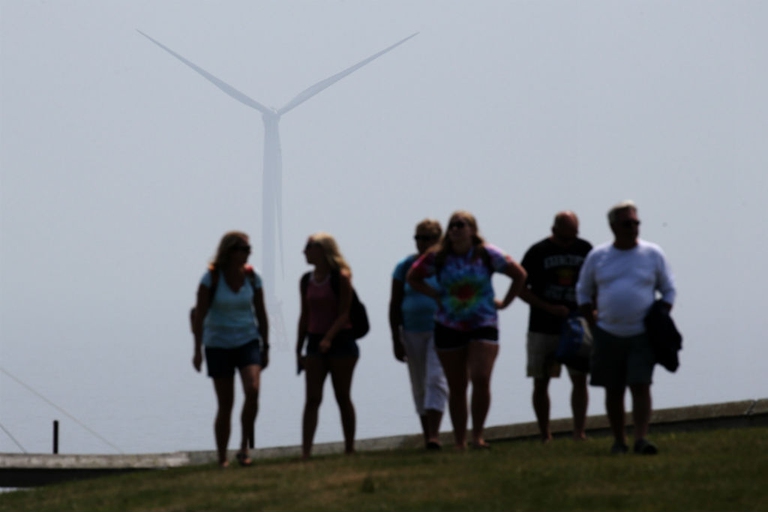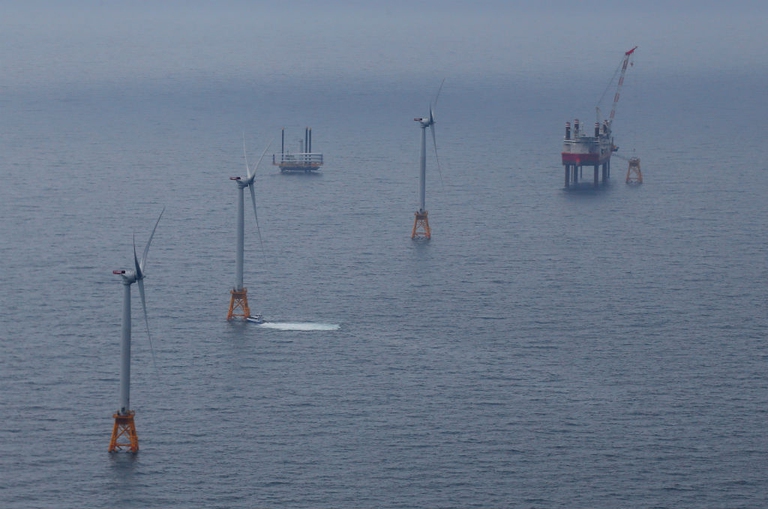
We met computer scientist Ramez Naam at the Singularity University summit 2017 in Milan. His words on the potential of renewables and technological innovation are encouraging.
Thanks to the National Offshore Wind Strategy, the US will build 86 GW of offshore wind by 2050, reducing greenhouse gas emissions by 1.8 percent.
The windmill blades of the wind farm located off the coast of Block Island, Rhode Island, are still not functioning. But in October they will start generate the first megawatts of wind power in the United States.
The Block Island wind farm is just the first of a series of projects that use offshore wind and are expected to have a total capacity of 86 GW by 2050. The country’s Secretary of Energy Ernest Moniz and Secretary of the Interior Sally Jewell revealed it in a document called National Offshore Wind Strategy: Facilitating the Development of the Offshore Wind Industry in the United States.
“Offshore wind has experienced enormous progress during the Obama administration. The first offshore wind farm has now finished construction, and we have gone from zero offshore wind areas leased before this administration to eleven areas that total the size of Rhode Island”, Moniz said. “Today’s collaborative strategic plan is part of a long-term commitment to support innovation that enables widespread offshore wind deployment”.
A robust offshore wind industry – the Department of Energy said – will create 160,000 jobs, reduce water consumption by 5 percent and cut emissions by 1.8 percent.
The Mit Technology Review praises the initiative, too. First, because the Block Island wind farm is hopefully just the first of a series of offshore wind projects. Secondly because the potential for developing offshore wind power in the United States is huge – around 4.200 gigawatts.
But the review also raised doubts. “It’s not clear, however, that offshore wind is primed to compete with other forms of power”, the Mit Technology Review writes. “The Block Island project cost 300 million dollars”.
In this sense, the United States should wait to expand their new market. While in Europe the offshore wind industry is increasingly expanding: in 2015 it added 10 gigawatts of offshore wind power at 82 wind farms.
Siamo anche su WhatsApp. Segui il canale ufficiale LifeGate per restare aggiornata, aggiornato sulle ultime notizie e sulle nostre attività.
![]()
Quest'opera è distribuita con Licenza Creative Commons Attribuzione - Non commerciale - Non opere derivate 4.0 Internazionale.
We met computer scientist Ramez Naam at the Singularity University summit 2017 in Milan. His words on the potential of renewables and technological innovation are encouraging.
A fine febbraio in Danimarca l’eolico è arrivato a coprire tutta la domanda di energia, battendo un nuovo record.
Emanuele Taibi, analyst at renewable energy agency Irena, explains why islands are well placed to push forward toward a more sustainable development model based on renewables and technological innovation
Mountain View giant announced that the company’s data centres and offices will be exclusively powered by renewable energy by 2017. “And it’s just the beginning”.
Costa Rica is setting more and more records. Renewable energy supplied almost all the energy produced in 2015 in the Central American country, while in 2016 solar power will prevail. For about two months in a row, to be more precise 76 days, the country hasn’t burnt any fossil fuels. The National Centre for Energy Control wrote in a public
Low-cost wind turbines built with red plastic buckets and printer engines bring electricity to 14 households in the poorest regions of Hanoi.
107 ore di energia da fonti rinnovabili. Un record in tutta Europa. Il Portogallo in prima linea già dagli anni ’90.
È successo domenica scorsa quando, per qualche ora, i 55 GW di energia elettrica sui 58 consumati provenivano da fonti rinnovabili: solare, eolico ed idroelettrico.
La costruzione di nuovi impianti basati su fonti rinnovabili ha consentito di aumentare dell‘8,3 per cento la capacità produttiva in un solo anno.









